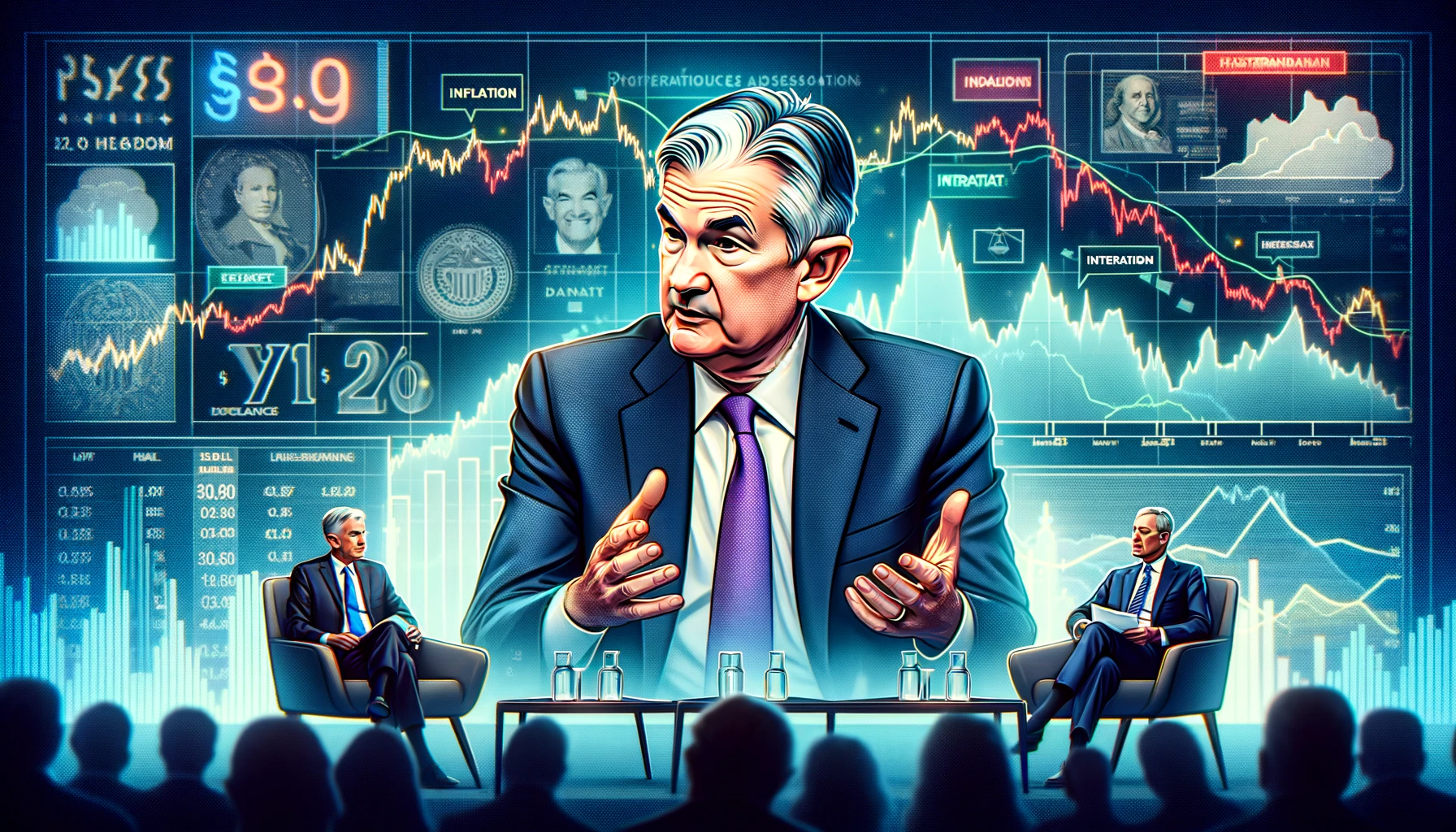On Tuesday, Jerome H. Powell, the Chair of the Federal Reserve, shared his views on the state of the U.S. economy and the prospects for inflation. His comments were made during a panel discussion in Amsterdam, where he provided insights into the Federal Reserve’s current stance on interest rates and economic growth.
Inflation and Interest Rates
Powell expressed that the Federal Reserve is currently holding interest rates steady, despite earlier expectations of potential rate cuts in 2024. This decision comes after recent inflation data showed higher-than-expected figures, disrupting the initial plans for reducing rates. The Consumer Price Index (CPI), which measures inflation, had decreased significantly in 2023 but remained above 3% in the early months of 2024. The Fed’s preferred inflation measure, the Personal Consumption Expenditures (PCE) index, also stayed above the Fed’s 2% target.
Economic Growth and Labor Market
Despite the inflation challenges, Powell maintained a positive outlook on the overall economic growth and the labor market. He projected the economy to grow at a rate of approximately 2% for the year, slightly above the Fed’s long-term estimates. Powell highlighted the robustness of the labor market, noting that unemployment rates have been consistently below 4% for over two years, indicating a strong job market. He attributed part of this strength to the influx of immigrants who have helped fill job vacancies and contributed to economic activity.

Future Policy Directions
Powell emphasized the need for patience in allowing the current monetary policy to work towards reducing inflation. He acknowledged that while further rate hikes are unlikely, they are not completely off the table. The key focus remains on maintaining the current policy rate long enough to ensure inflation trends downward. Powell also pointed out that the Fed is observing how various factors, such as locked-in low borrowing costs from previous years, are influencing the economy and the effectiveness of current policies.
Challenges and Public Perception
One of the significant challenges highlighted by Powell is the public perception of inflation. While inflation rates have decreased from their 2022 highs, the persistent high price levels continue to affect consumer confidence. Powell explained that lower inflation rates mean prices are rising more slowly, not that they are decreasing, which can be confusing for the public. He stressed the Fed’s commitment to restoring and maintaining price stability to alleviate the burden on consumers, especially those with lower incomes who are most affected by inflation.
This article is based on the following articles:

Background Information
By understanding these concepts and the Fed’s role, readers can better appreciate the complexities of managing a large economy and the significance of Powell’s comments on inflation and economic policy.
What is Inflation?
Inflation is the rate at which the general level of prices for goods and services rises, eroding purchasing power. When inflation is high, each unit of currency buys fewer goods and services. Inflation can be measured in several ways, but two key measures are often referenced:
- Consumer Price Index (CPI): The CPI measures the average change over time in the prices paid by urban consumers for a market basket of consumer goods and services.
- Personal Consumption Expenditures (PCE) Index: The PCE index measures the prices that people living in the United States, or those buying on their behalf, pay for goods and services. It is often considered the Federal Reserve’s preferred measure of inflation.
The Role of the Federal Reserve
The Federal Reserve, often referred to as the Fed, is the central bank of the United States. It was established to provide the country with a safe, flexible, and stable monetary and financial system. The Fed has several key functions:
- Monetary Policy: The Fed controls the supply of money in the economy and influences interest rates to achieve its dual mandate: maximum employment and stable prices.
- Supervision and Regulation: It supervises and regulates banks to ensure the safety and soundness of the nation’s banking and financial system.
- Financial Services: The Fed provides financial services to depository institutions, the U.S. government, and foreign official institutions.
Interest Rates and Monetary Policy
One of the main tools the Fed uses to influence the economy is the manipulation of interest rates. Here’s how it works:
- Lowering Interest Rates: When the economy is slow, the Fed may lower interest rates to encourage borrowing and investing. Lower rates make loans cheaper, stimulating spending and investment by consumers and businesses.
- Raising Interest Rates: Conversely, when the economy is overheating and inflation is rising too fast, the Fed may raise interest rates. Higher rates make borrowing more expensive, which can cool off spending and investment, helping to control inflation.
Recent Economic Context
In response to the economic impact of the COVID-19 pandemic, the Fed initially lowered interest rates to near zero to support the economy. This policy was part of a broader effort to stimulate economic activity through easier borrowing conditions.
However, as the economy began to recover, inflation started to rise more rapidly. By 2022, inflation had reached levels not seen in decades, prompting the Fed to change its approach. To combat high inflation, the Fed began to increase interest rates significantly, reaching over 5% by mid-2023.
Powell’s Recent Statements
Jerome Powell’s recent comments reflect the Fed’s ongoing efforts to balance economic growth with inflation control:
- Holding Interest Rates Steady: Despite expectations of rate cuts, the Fed decided to maintain high interest rates due to persistently high inflation.
- Economic Growth and Job Market: Powell expressed optimism about continued economic growth and a strong labor market, supported in part by immigration.
- Uncertainty and Public Perception: Powell acknowledged the public’s frustration with high prices and explained the challenges of communicating inflation measures, emphasizing the Fed’s commitment to price stability.
Understanding Economic Indicators
To better understand the Fed’s decisions, it’s useful to know about key economic indicators:
- Gross Domestic Product (GDP): Measures the total value of all goods and services produced in a country. It’s an indicator of economic health.
- Unemployment Rate: The percentage of the labor force that is unemployed and actively seeking employment. A low rate typically indicates a strong economy.
- Consumer Confidence Index (CCI): Measures how optimistic or pessimistic consumers are about the economy’s prospects. High consumer confidence can lead to more spending and economic growth.

Debate/Essay Questions
- Can immigration significantly contribute to economic growth and help manage inflation, as suggested by Powell?
- What are the potential risks and benefits of the Fed’s decision to hold interest rates steady instead of cutting them as initially planned?
Please subscribe to Insight Fortnight, our biweekly newsletter!
